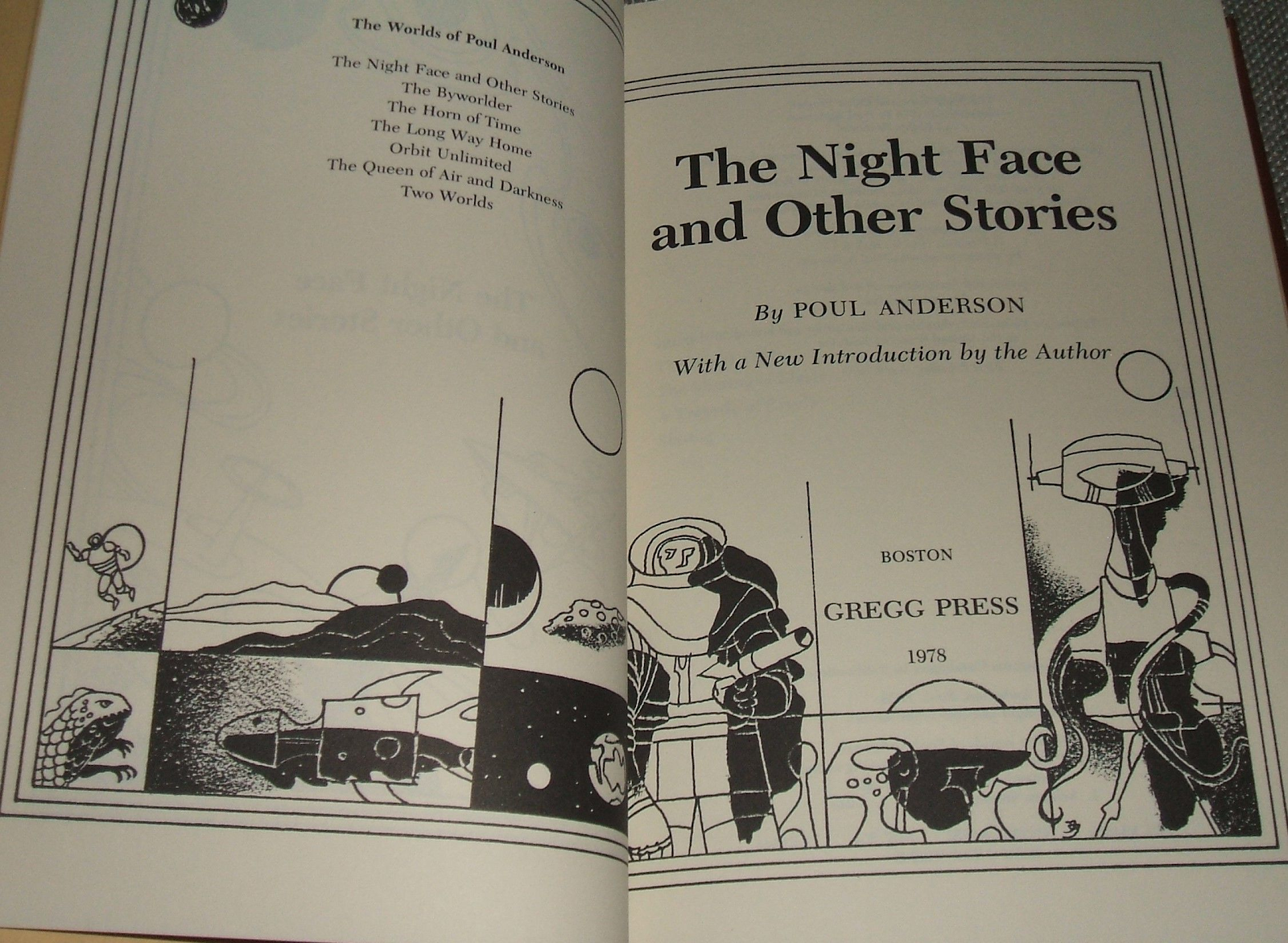"...the Pretender's nonhuman mercenaries broke down the last defenses." (p. 464)
Gorrazanians, Merseians and Diomedeans have all worked as mercenaries in earlier periods of the Technic History. Anyone filming this story could show any of these races or some other previously known or unknown race attacking the governor's palace in Anushirvan on Sassania. Equally valid alternative dramatizations could show any of these races or even a racially mixed mercenary army.
In "Starfog," Daven Laure, a Ranger of the Commonalty, is said to encounter "...nonhuman sophonts." (p. 714) Again, in a screen adaptation, a brief scene could show either aliens familiar from earlier in the History or some newly imagined organisms.
Also relevant is what human beings look like after generations in different planetary environments. Roan Tom's chief wife, Dagny, has grown up on Kraken which is heavier than Earth. Tom has Lochlanna long head, wide face, high cheekbones and beardlessness combined with Hermetian red hair and blue eyes. Let's see all this on cinema screens.

7 comments:
Kaor, Paul!
I think, if Anderson had written more post-Imperial stories set during or after the Long Night, we would have seen some non-human characters.
And this is as good a place as any to quote from the original version of "Honorable Enemies" a passage which amused me: "Flandry was more than a little drunk when the party ended. Wine flowed freely at a Betelgeusean banquet, together with music, food, and dancing girls of every race present" (AGENT OF THE TERRAN EMPIRE, Chilton Books, 1965, page 68). The very idea of Merseian dancing girls bemused me!
Alfzarians seem to favor wild and raucous parties--so much so that Aline Chang-Lei complained she preferred staid and stuffy social functions on Terra!
Ad astra! Sean
Note that blue eyes originally appeared among Mesolithic hunter-gatherers in western Europe... who were rather dark-skinned.
The proto-Indo-Europeans sometimes had pale gray eyes, evidently, which are still most common in parts of the eastern Baltic and adjacent areas where the Corded Ware (an early offshoot of the Yamnaya) were the first agriculturalists.
So all sorts of combinations are possible.
And eye colours that long ago are definitely known?
Kaor, Paul!
As regards what Stirling said, I suggest that geneticists studying how traits are inherited or not could easily be traced as far back in the past as the evidence taken from human remains allows.
Ad astra! Sean
Paul: yes, if you can recover the DNA, and DNA has been recovered for humans and hominids back a long way now.
We have a fairly complete genome for Neanderthals, for example.
The mutations that control eye, skin and hair color are well known.
There are two mutations that produce blond hair, for example -- one in western Eurasia, and a separate one in Australia and the South Pacific.
(You may notice that some Australian Aborigines and Melanesians in the South Pacific -- places like the Solomons and Vanatu -- are blond. It's quite striking against the dark complexion.)
The West Eurasian mutation for blondism is first recorded in about 17,000 BCE, in an Ancient North Eurasian individual from southern Siberia -- a mutated allele, rs12821256 of the KITLG gene, if you want to get technical.
The Ancient North Eurasians -- what's known as a 'ghost' population that doesn't survive in the present -- contributed about half the genes of the Yamnaya, the proto-Indo-European speakers.(*)
They brought it into Europe, and then their successor Corded Ware culture spread it widely.
The frequency of the gene increased over time. It was apparently a sexual selection event -- blonds did have more fun, and more surviving offspring because they were sought out as mates by high-status individuals.
(*) and the ANE contributed about a quarter of the DNA of the original American Indians. This caused a lot of confusion in the early days of DNA research, because it kept showing up as "European genes" in Indian populations which were known to be unmixed. The 'mixture' actually dated back about 20,000 years.
Human eye color is a 'polygenetic' trait -- that is, it's controlled by the interaction of several different genes, and it's not just a matter of the pigment in the eyes.
Kaor, Mr. Stirling!
Fascinating indeed! I did notice, with interest, from pictures I've seen of how some Aussie aborigines and Melanesians were blonds. I would have thought black hair more likely!
And I have somewhere in my books a photo, in color, of an Egyptian XVIII Dynasty piece of art showing a line of blond and black Nubian slave girls yoked together. IIRC, the blonds came from Mitanni, in what's now Syria.
No surprise the genes for blond hair and blue eyes spread so widely. Of course powerful, high status warriors and chieftains would snaffle the prettiest girls!
Ad astra! Sean
Post a Comment